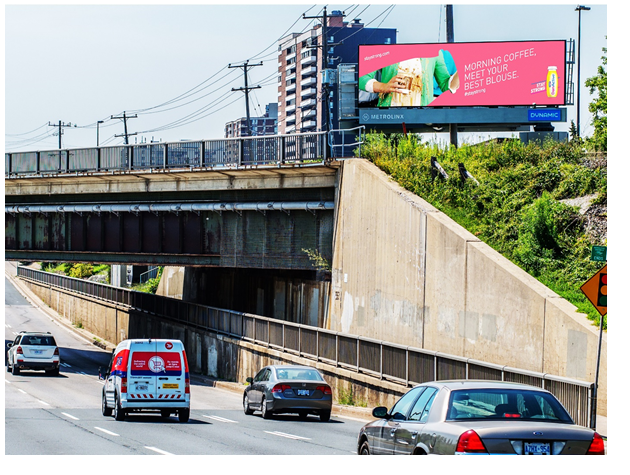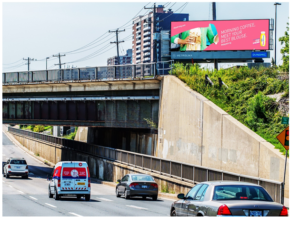So Digital Billboard Ads Change With the Speed of Traffic Now
You hate creeping through traffic. But advertisers love it, because you’re a captured audience with plenty of time to consume sophisticated messages. If you’re zipping along, they have just a moment to pitch you burgers, or tires, or cloud services. In the days of yore—like, last year—that meant Mad Men had to choose between big visuals targeting leadfoots and text-heavy spots for the rush hour warrior.
Digital billboards supplied with data from Internet services company Inrix lets them deliver both. For five weeks this summer, eight digital billboards along highways in Toronto and Montreal tailored messages to suit how fast people were moving. The multinational food giant Danone was the first to try the new strategy, displaying four ads based on congestion levels, from “Moving right along” to “I’m never getting there!”
Inrix has seen companies use its data to trigger two ads, but never four. The copious amount of data flowing from navigation systems and apps made it possible. “It’s all part of making digital advertising more and more relevant,” says Kevin Foreman, who oversees geoanalytics for the company.
Chances are you don’t know you’re contributing oodles of traffic data to Inrix. But you’ll find its software in navi systems favored by Audi, Ford, and Volvo, to name a few. Major fleets like UPS use it, too. And of course Inrix has an app, which competes with Waze. In all, 270 million drivers in 45 countries contribute anonymized travel information to Inrix. The company gives you something in exchange, though: It feeds that raw data into algorithms that help government agencies spot crashes and jams, or aid users in dodging congestion.
Inrix also has a healthy sideline selling that data to outdoor advertising companies (you know, the guys that run billboards), which use it to find new ways of selling you things. Canadian digital billboard supplier Dynamic Outdoor came up with the idea for a campaign based on external data feeds, which would change according to information provided by Inrix and others. (The Danone campaign also changed its copy based on the weather—a hot day translated into an ad featuring a cool, blue pool.)
Essentially, Dynamic Outdoor’s software periodically pinged Inrix servers for real-time traffic updates, then brought Danone’s ad up to speed based on how grueling the commute was.
Did it sell more yogurt? The advertising industry is still developing a data-based standard for measuring billboard effectiveness. (Individual companies generally measure their return on investment by quantifying local spikes—or dives—in sales, but don’t disclose that info.) Still, plenty of research suggests that people cotton to outdoor ads targeting their specific demographic—race, income level, age, and maybe, rush hour status. By now, you’re used to targeted ads following you around online. They’re coming to your commute, too.
https://www.wired.com/2016/07/digital-billboard-ads-change-speed-traffic-now/





